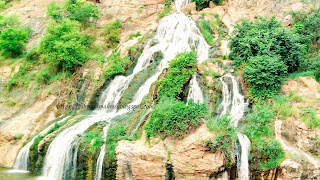Avani Ramalingeshwara temple - architectural marvel of pre-medieval India
Avani, a small village situated in the district of Kolar, is known for its great antiquity and divine nature. It is called as the "Gaya of the south". This place is located at a distance of about 100 Kms from Bangalore(majestic/KBS area) and about 32 km from Kolar goldfields area. The temple is open from morning 6am to evening 6pm for visitors. Ramalingeshwara group of temples and Seetha temple on the hilltop are the famous shrines in this place. The history of the place is traced back to Ramayana time, during which it is believed that it was the abode of saint Valmiki(author of the great Ramayana epic) and that Lord Sri Ram visited this place during his return to Ayodhya after his victory on Lanka. According to the legend, it is said that Rama's twin sons Lava and Kusha were born here in this place(Lava-Kusha betta), at a visible distance from the temple complex. Rama and his 3 brothers decided to acquit their sin of waging a war against their own children by doing a puja here and therefore, it is believed that all these lingas were established.
Ramalingeshwara temple complex comprises four major shrines, one each for Rama, Lakshmana, Bharata and Shatrunghna along with other shrines for goddess Parvathi, Vali and Sugriva. The temple consists of the main sanctum(garbgagriha), a vestibule (antarala) and a hall (navaranga/mandapam) with beautiful pilasters and carvings. It is amazing to view the adhishtana of the temple, i.e, base with its beautiful sculptural designs. The outer walls have pilasters capped by shikharas. Exteriors of the shrines include the sculptures of elephants, lions, makara, yakshas and other characters of mythology. The Lakshmanalingeshwara temple has the larger linga amongst others, has a wall, and the pillars within the complex have really some great sculptures and ceilings are displayed of Lord Uma-Maheshwara (Shiva with his consort Parvathi) surrounded by ashtadikpalakas (guardians of eight directions). The similar structure is found in Bharateshwara shrines too. As per the inscriptions, it is said that the development of this the temple was taken place during 10th-century by Nolamba and Chola dynasties, who were the great followers of Lord Shiva.
Another main shrine is situated on the top of the hill dedicated to Seetha Devi. One may need to climb 500 to 600 steps to reach the top of the hill on fairly good stairs. Per legend, it is believed that Seetha was found in this place while ploughing the field and therefore, the place is called 'Avani' as she had another name 'Avanisuta', meaning child of the earth. The marks on the hills are still considered to be of the Ramayana time, where Seetha's twin children Lav-Kush tied Ashwamedha Yagna horse of their father. Another belief associated with this temple states that, if a childless woman is taking a holy dip in the Kalyani (pond in the temple complex) and walk up the hilltop of the temple, she would fall asleep as soon as she reaches on top and dreams of a loving woman blessing her. It is believed that Maa Seetha is blessing her devotees to fulfil the desire. Well, the tales are apart, it's really a good place to satisfy your inner soul, or ancient temple architecture lovers in the serenity of nature. Therefore, if you are searching for a place to hang around this weekend, then it's a perfect gateway for you, away from the hustle of the city!
Ramalingeshwara temple complex comprises four major shrines, one each for Rama, Lakshmana, Bharata and Shatrunghna along with other shrines for goddess Parvathi, Vali and Sugriva. The temple consists of the main sanctum(garbgagriha), a vestibule (antarala) and a hall (navaranga/mandapam) with beautiful pilasters and carvings. It is amazing to view the adhishtana of the temple, i.e, base with its beautiful sculptural designs. The outer walls have pilasters capped by shikharas. Exteriors of the shrines include the sculptures of elephants, lions, makara, yakshas and other characters of mythology. The Lakshmanalingeshwara temple has the larger linga amongst others, has a wall, and the pillars within the complex have really some great sculptures and ceilings are displayed of Lord Uma-Maheshwara (Shiva with his consort Parvathi) surrounded by ashtadikpalakas (guardians of eight directions). The similar structure is found in Bharateshwara shrines too. As per the inscriptions, it is said that the development of this the temple was taken place during 10th-century by Nolamba and Chola dynasties, who were the great followers of Lord Shiva.
Another main shrine is situated on the top of the hill dedicated to Seetha Devi. One may need to climb 500 to 600 steps to reach the top of the hill on fairly good stairs. Per legend, it is believed that Seetha was found in this place while ploughing the field and therefore, the place is called 'Avani' as she had another name 'Avanisuta', meaning child of the earth. The marks on the hills are still considered to be of the Ramayana time, where Seetha's twin children Lav-Kush tied Ashwamedha Yagna horse of their father. Another belief associated with this temple states that, if a childless woman is taking a holy dip in the Kalyani (pond in the temple complex) and walk up the hilltop of the temple, she would fall asleep as soon as she reaches on top and dreams of a loving woman blessing her. It is believed that Maa Seetha is blessing her devotees to fulfil the desire. Well, the tales are apart, it's really a good place to satisfy your inner soul, or ancient temple architecture lovers in the serenity of nature. Therefore, if you are searching for a place to hang around this weekend, then it's a perfect gateway for you, away from the hustle of the city!







Comments
Post a Comment